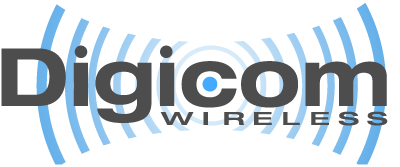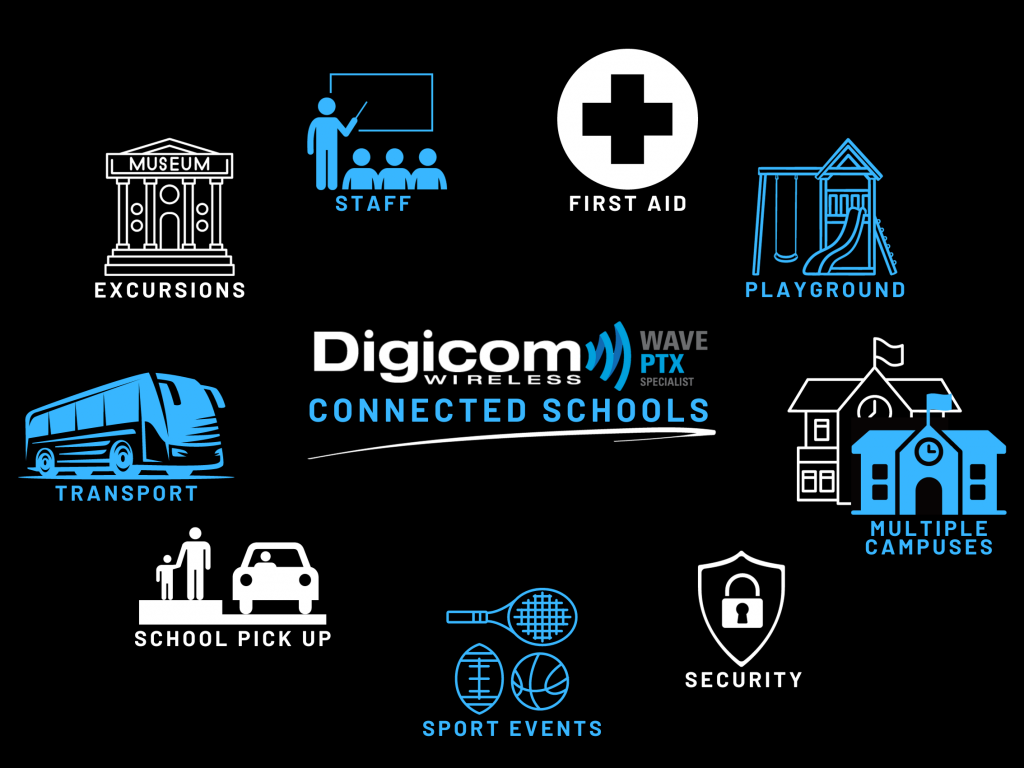In-Building Coverage Solutions (IBC)
Coverage & Capacity Solution for Business
TALK TO AN EXPERT
In today’s age, it is an expectation that you can use your phone in just about any urban environment. Coupled with OH&S and emergency considerations, extensive and reliable phone communications can increase your business’ productivity and confidence. Conversely, poor or non-existent phone coverage can lead to poor performance indicators and frustration amongst personnel, tenants and the public etc.
Digicom Wireless can help you through all stages of cellular solution development from design, installation to commissioning and hand-over. We can guide you through the appropriate solutions to suit your business and requirements from off-air coverage to extensive capacity solutions and engagement with telco carriers.
We can also assist consultants to help you develop the right solution for your client.
In-Building Coverage (IBC)
IBC (In-Building Coverage) refers to the entire in-building coverage environment and may include elements such as repeater and base station (RBS/BTS) equipment.
DAS refers to the Distributed Antenna System – a component of an IBC solution that will interface a repeater or radio base station. A DAS does not generate a signal, it requires input from active equipment (a signal source).
IBC equipment and infrastructure are categorised as either active, passive or hybrid. Active equipment produces a signal and passive equipment is driven by the existing signal that was produced.
DAS TYPES
Passive – where the repeater / BTS signal is distributed to the antenna system via a passive network of coaxial cables, splitters and couplers.
Active – where the repeater / BTS signal is connected to a central hub or interface unit, which then feeds a network of either optical fibre cables, or dedicated structured cabling. Each of these cables in turn connects to an active RF head and antenna.
Hybrid – being a combination of Passive and Active Elements.
Pictured, right: an example of a IBC Cellular DAS system.
Signal Sources (Off-Air)
The most common signal source for a DAS and often the most economical is an off-air repeater (such as a Cel-fi G41 or Cel-fi Quatra). In simple terms, a signal is received from a carrier source via external donor antennas, amplified and redistributed through a DAS system. The signal is amplified with a repeater that has been authorized for use by the respective telecommunications carrier.
Off-air repeater solutions are best suited to coverage requirements as opposed to capacity (i.e. you need cellular coverage to be available throughout the DAS environment and not high capacity / high bandwidth). The signal is borrowed from the existing carrier source, amplified, and simply “extended” throughout the DAS environment.
DAS TYPES
Passive – where the repeater / BTS signal is distributed to the antenna system via a passive network of coaxial cables, splitters and couplers.
Active – where the repeater / BTS signal is connected to a central hub or interface unit, which then feeds a network of either optical fibre cables, or dedicated structured cabling. Each of these cables in turn connects to an active RF head and antenna.
Hybrid – being a combination of Passive and Active Elements.
Pictured, right: an example of a IBC Cellular DAS system.
DAS TYPES
Passive – where the repeater / BTS signal is distributed to the antenna system via a passive network of coaxial cables, splitters and couplers.
Active – where the repeater / BTS signal is connected to a central hub or interface unit, which then feeds a network of either optical fibre cables, or dedicated structured cabling. Each of these cables in turn connects to an active RF head and antenna.
Hybrid – being a combination of Passive and Active Elements.
Pictured, right: an example of a IBC Cellular DAS system.
Signal Sources (Off-Air)
The most common signal source for a DAS and often the most economical is an off-air repeater (such as a Cel-fi G41 or Cel-fi Quatra). In simple terms, a signal is received from a carrier source via external donor antennas, amplified and redistributed through a DAS system. The signal is amplified with a repeater that has been authorized for use by the respective telecommunications carrier.
Off-air repeater solutions are best suited to coverage requirements as opposed to capacity (i.e. you need cellular coverage to be available throughout the DAS environment and not high capacity / high bandwidth). The signal is borrowed from the existing carrier source, amplified, and simply “extended” throughout the DAS environment.
Signal Sources (RBS/BTS)
Radio Base Station / Base Transceiver Station
This equipment provides a direct connection from the telecommunication carrier(s) (Telstra, Optus, Vodafone), providing high-capacity and critical communications, or, to establish an entirely new site where there is no existing coverage. This active equipment must interface a DAS that meets MCF 2018 specifications (Multi Carrier Forum 2018) and approval of the lead-carrier that has been invited to join the DAS. Proper planning, testing and consultation must be carried out prior to the installation of any DAS before a carrier will agree to connect their BTS equipment.
Candidates that might require a carrier DAS include (but not limited to): corporate offices and residential buildings, shopping centres, stadiums, convention & exhibition centres, transport hubs, underground installations, and airports.
It is important to understand that once the clients’ DAS has been commissioned according to MCF standards – ownership of the DAS will be transferred and handed over to the lead-carrier. The client will be responsible for payment of the RBS equipment and connection to the DAS of the invited carrier(s).
The lead-carrier will become responsible for installation of the nominated RBS/BTS equipment in conjunction with other carrier(s) that have been invited. On-going operation, maintenance and associated costs will now be borne by the lead-carrier in conjunction with other carrier(s) that joined.
Signal Sources (RBS/BTS)
Radio Base Station / Base Transceiver Station
This equipment provides a direct connection from the telecommunication carrier(s) (Telstra, Optus, Vodafone), providing high-capacity and critical communications, or, to establish an entirely new site where there is no existing coverage. This active equipment must interface a DAS that meets MCF 2018 specifications (Multi Carrier Forum 2018) and approval of the lead-carrier that has been invited to join the DAS. Proper planning, testing and consultation must be carried out prior to the installation of any DAS before a carrier will agree to connect their BTS equipment.
Candidates that might require a carrier DAS include (but not limited to): corporate offices and residential buildings, shopping centres, stadiums, convention & exhibition centres, transport hubs, underground installations, and airports.
It is important to understand that once the clients’ DAS has been commissioned according to MCF standards – ownership of the DAS will be transferred and handed over to the lead-carrier. The client will be responsible for payment of the RBS equipment and connection to the DAS of the invited carrier(s).
The lead-carrier will become responsible for installation of the nominated RBS/BTS equipment in conjunction with other carrier(s) that have been invited. On-going operation, maintenance and associated costs will now be borne by the lead-carrier in conjunction with other carrier(s) that joined.
Signal Sources (RBS/BTS)
Radio Base Station / Base Transceiver Station
This equipment provides a direct connection from the telecommunication carrier(s) (Telstra, Optus, Vodafone), providing high-capacity and critical communications, or, to establish an entirely new site where there is no existing coverage. This active equipment must interface a DAS that meets MCF 2018 specifications (Multi Carrier Forum 2018) and approval of the lead-carrier that has been invited to join the DAS. Proper planning, testing and consultation must be carried out prior to the installation of any DAS before a carrier will agree to connect their BTS equipment.
Candidates that might require a carrier DAS include (but not limited to): corporate offices and residential buildings, shopping centres, stadiums, convention & exhibition centres, transport hubs, underground installations, and airports.
It is important to understand that once the clients’ DAS has been commissioned according to MCF standards – ownership of the DAS will be transferred and handed over to the lead-carrier. The client will be responsible for payment of the RBS equipment and connection to the DAS of the invited carrier(s).
The lead-carrier will become responsible for installation of the nominated RBS/BTS equipment in conjunction with other carrier(s) that have been invited. On-going operation, maintenance and associated costs will now be borne by the lead-carrier in conjunction with other carrier(s) that joined.
MCF 2018
Multi Carrier Forum Specifications
The Mobile Carriers Forum (MCF) is a division of the Australian Mobile Telecommunications Association (AMTA) representing the three mobile phone carriers deploying mobile networks in Australia, namely Telstra, Optus and TPG Telecom.
The MCF 2018 specification outlines the design standards and performance quality criteria
required to ensure end-users receive a carrier-grade service from the DAS. Ensuring end-users receive an optimal quality experience.
MIMO / SISO DAS Systems
“MIMO” specifically refers to multiple in, multiple out transmission – sending and receiving more than one data signal simultaneously over the same radio channel by exploiting multipath propagation – thus multiplying link capacity.
“SISO” specifically refers to single in, single out transmission – sending and receiving one data signal over one radio path.


